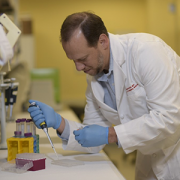A growing list of factors that impact CKD severity for kids

Myriad biological and societal factors can impact the occurrence and accelerate progression of chronic kidney disease for children of African descent – including preterm birth, exposure to toxins during gestation and lower socioeconomic status – and can complicate these children’s access to effective treatments.
Myriad biological and societal factors can impact the occurrence and accelerate progression of chronic kidney disease (CKD) for children of African descent – including preterm birth, exposure to toxins during gestation and lower socioeconomic status – and can complicate these children’s access to effective treatments, according to an invited commentary published in the November 2018 edition of American Journal of Kidney Diseases.
Clinicians caring for “these vulnerable children should be mindful of these multiple competing and compounding issues as treatment options are being considered along the continuum from CKD to kidney failure to transplantation,” writes Marva Moxey-Mims, M.D., chief of the Division of Nephrology at Children’s National Health System.
The supplemental article was informed by lessons learned from The Chronic Kidney Disease in Children (CKiD) longitudinal study and conversations that occurred during the Frank M. Norfleet Forum for Advancement of Health, “African Americans and Kidney Disease in the 21st Century.”
African American children represent 23 percent of the overall population of kids with CKD in the CKiD study. While acquired kidney diseases can get their start during childhood when the diseases betray few symptoms, the full impact of illness may not be felt until adulthood. A number of factors can uniquely affect children of African descent, heightening risk for some kids who already are predisposed to suffering more severe symptoms. These include:
- Preterm birth. African American children make up 36 percent of patients in CKiD with glomerular disease, which tends to have faster progression to end-stage renal disease. These diseases impair kidney function by weakening glomeruli, which impairs the kidneys’ ability to clean blood. Patients with a high-risk apolipoprotein L1 (APOL1) genotype already are at higher risk for focal segmental glomerulosclerosis (FSGS) and CKD. Researchers hypothesize that preterm birth may represent “a second hit that facilitates the development of glomerular damage resulting from the high-risk genotype.” According to the Centers for Disease Control and Prevention, 1 in 10 U.S. infants in 2016 was born preterm, e.g., prior to 37 weeks gestation.
- APOL1 genotype. Compared with children who had a low-risk genotype and FSGS, children with a high-risk genotype had higher rates of uncontrolled hypertension, left ventricular hypertrophy, elevated C-reactive protein levels and obesity.
- Human immunodeficiency viral (HIV) status. About 65 percent of U.S. children with HIV-1/AIDS are African American. In a recent nested case-control study of children infected with HIV in the womb, infants with high-risk APOL1 genotypes were 3.5 times more likely to develop CKD with viral infection serving as “a likely second hit.”
- Access to kidney transplant. African American adults experience a faster transition to end-stage renal disease and are less likely to receive kidney transplants. African American children with CKD from nonglomerular diseases begin renal replacement therapy 1.6 years earlier than children of other races, after adjusting for socioeconomic status. Their wait for dialysis therapy was 37.5 percent shorter. However, these African American children waited 53.7 percent longer for transplants. Although donor blood types, genetic characteristics and other biological factors each play contributing roles, “these findings may reflect sociocultural and institutional differences not captured by socioeconomic status,” Dr. Moxey-Mims writes.
To alleviate future health care disparities, she suggests that additional research explore the impact of expanding services to pregnant women to lower their chances of giving birth prematurely; early childhood interventions to help boost children’s educational outcomes, future job prospects and income levels; expanded studies about the impact of environmental toxicities on prenatal and postnatal development; and heightened surveillance of preterm infants as they grow older to spot signs of kidney disease earlier to slow or prevent disease progression.
“Clinicians can now begin to take into account genetics, socioeconomic status and the impact of the built environment, rather than blaming people and assuming that their behavior alone brought on kidney disease,” Dr. Moxey-Mims adds. “Smoking, not eating properly and not exercising can certainly make people vulnerable to disease. However, there are so many factors that go into developing a disease that patients cannot control: You don’t control to whom you’re born, where you live or available resources where you live. These research projects will be useful to help us really get to the bottom of which factors we can impact and which things can’t we prevent but can strive to mitigate.”
The article covered in this post is part of a supplement that arose from the Frank M. Norfleet Forum for Advancement of Health: African Americans and Kidney Disease in the 21st Century, held March 24, 2017, in Memphis, Tennessee. The Forum and the publication of this supplement were funded by the Frank M. Norfleet Forum for Advancement of Health, the Community Foundation of Greater Memphis and the University of Tennessee Health Science Center.











